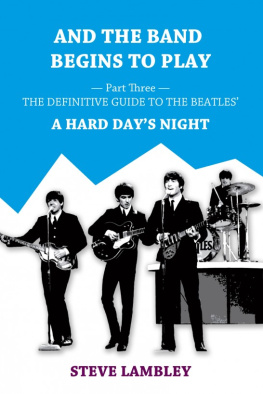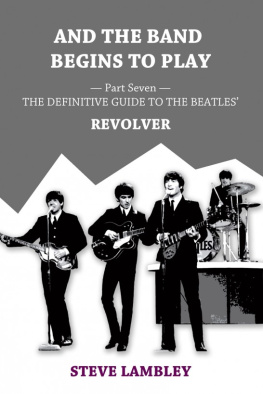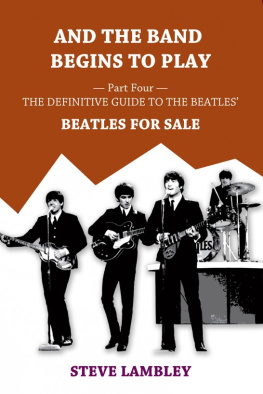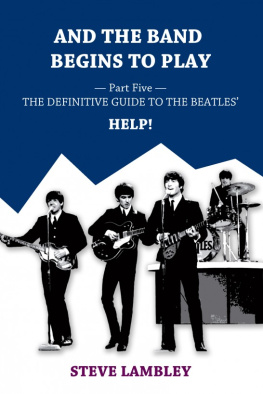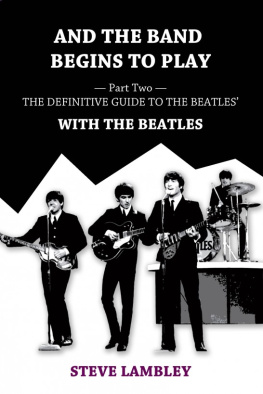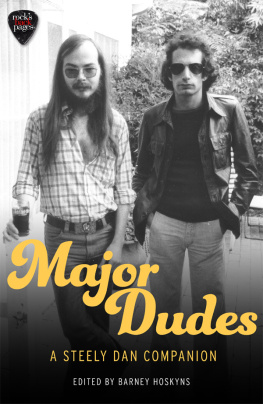
Aja
Praise for the series:
It was only a matter of time before a clever publisher realized that there is an audience for whom Exile on Main Street or Electric Ladyland are as significant and worthy of study as The Catcher in the Rye or Middlemarch . The series, which now comprises 29 titles with more in the works, is freewheeling and eclectic, ranging from minute rock-geek analysis to idiosyncratic personal celebrationThe New York Times Book Review
Ideal for the rock geek who thinks liner notes just arent enoughRolling Stone
One of the coolest publishing imprints on the planetBookslut
These are for the insane collectors out there who appreciate fantastic design, well-executed thinking, and things that make your house look cool. Each volume in this series takes a seminal album and breaks it down in startling minutiae. We love these. We are huge nerdsVice
A brilliant series each one a work of real loveNME (UK)
Passionate, obsessive, and smartNylon
Religious tracts for the rock n roll faithfulBoldtype
[A] consistently excellent seriesUncut (UK)
Wearent naive enough to think that were your only source for reading about music (but if we had our waywatch out). For those of you who really like to know everything there is to know about an album, youd do well to check out Continuums 33 1/3 series of books.Pitchfork
For reviews of individual titles in the series, please visit our website at www.continuumbooks.com and 33third.blogspot.com
Also available in this series:
Dusty in Memphis by Warren Zanes
Forever Changes by Andrew Hultkrans
Harvest by Sam Inglis
The Kinks Are The Village Green Preservation Society by Andy Miller
Meat Is Murder by Joe Pernice
The Piper at the Gates of Dawn by John Cavanagh
Abba Gold by Elisabeth Vincentelli
Electric Ladyland by John Perry
Unknown Pleasures by Chris Ott
Sign O the Times by Michaelangelo Matos
The Velvet Underground and Nico by Joe Harvard
Let It Be by Steve Matteo
Live at the Apollo by Douglas Wolk
Aqualung by Allan Moore
OK Computer by Dai Griffiths
Let It Be by Colin Meloy
Led Zeppelin IV by Erik Davis
Armed Forces by Franklin Bruno
Exile on Main Street by Bill Janovitz
Grace by Daphne Brooks
Murmur by J. Niimi
Pet Sounds by Jim Fusilli
Ramones by Nicholas Rombes
Endtroducing by Eliot Wilder
Kick Out the Jams by Don McLeese
Low by Hugo Wilcken
In the Aeroplane Over the Sea by Kim Cooper
Music from Big Pink by John Niven
Pauls Boutique by Dan LeRoy
Doolittle by Ben Sisario
Theres a Riot Goin On by Miles Marshall Lewis
Stone Roses by Alex Green
Bee Thousand by Marc Woodsworth
The Who Sell Out by John Dougan
Highway 61 Revisited by Mark Polizzotti
Loveless by Mike McGonigal
The Notorious Byrd Brothers by Ric Menck
Court and Spark by Sean Nelson
69 Love Songs by LD Beghtol
Songs in the Key of Life by Zeth Lundy
Use Your Illusion I and II by Eric Weisbard
Daydream Nation by Matthew Stearns
Trout Mask Replica by Kevin Courrier
Double Nickels on the Dime by
Forthcoming in this series:
Lets Talk About Love by Carl Wilson
Pretty Hate Machine by Daphne Carr
Rid of Me by Kate Schatz
and many more...
Aja

Don Breithaupt

2011
Continuum International Publishing Group
80 Maiden Lane, Suite 704, New York, NY 10038
The Tower Building, 11 York Road, London SE1 7NX
www.continuumbooks.com
2007 by Don Breithaupt
All rights reserved. No part of this book may be
reproduced, stored in a retrieval system, or transmitted
in any form or by any means, electronic, mechanical,
photocopying, recording, or otherwise, without the
written permission of the publishers or their agents.
Library of Congress Cataloging-in-Publication Data
Breithaupt, Don.
Aja / Don Breithaupt.
p. cm. -- (33 1/3)
Includes bibliographical references (p.).
eISBN-13: 978-1-4411-8132-9
1. Steely Dan (Musical group) Aja. I. Title. II. Series.
ML421.S76B74 2007
782.421660922--dc22
2007010815
Printed and bound in the United States of America
Acknowledgments
First and foremost, my heartfelt thanks to Donald Fagen for agreeing to be interviewed for this book. He sat down with me at his Manhattan office last June, fielded a stack of nuts-and-bolts questions about the making of a thirty-year-old record, and was funny and forthcoming throughout (I think I got off to a good start by promising not to pose any hard-hitting, daily newspaper-style questions like Which comes first, words or music?).
Additional thanks to: Brian Tomasini at Irving Azoffs office, who arranged the interview; Steve Khan, Lee Ritenour and Chuck Findley, who shed additional light on the Aja sessions and the composers methods; Marc Jordan, who provided details of Fagen, Katz and Nicholss participation in his debut album; series editor David Barker, who gave me invaluable direction from the beginning; Jay Graydon, who supplied a raft of material about the final Peg guitar session; former Metal Leg editor and current Dan attach Pete Fogel, who has done me more than a few favors over the years; and Steve Armour, whose friendship and insight are unwavering.
Finally, thanks as always to my long-suffering wife, Rikki (yes, Rikki), who, through no fault of her own, has the complete works of Steely Dan permanently lodged in her head.
Preface
The challenge was: dont gush. Its your favorite album. Youre going to write it a love letter and make a fool of yourself.
I had already called Aja the best record in the solar system in print (in Night Moves: Pop Music in the Late 70s), so maybe, I told myself, the hyperbole was out of my system. Right. The hard part, as it turns out, wasnt squelching my enthusiasm: the hard part was properly explaining it. Its a well-worn adage that the easiest assignment in the world is reviewing something you cant standRod Stewart continues to have about him the air of squandered potential...and Ive found that writing about something halfway likable is usually a snap tooMaroon serves notice that Barenaked Ladies are tired of being your Yoko Ono and would like to be your John Lennon...but trying to explain why a particular recording implants itself in your DNA on first listening, well, thats tough. It feeds into other classic stumpers like: at what point does craft become art? And: does street-level popularity preclude artistic immortality? And (most importantly): who cares what I think?
Next page


![Lambley - And the Band Begins to Play: [Part9 The Definitive Guide to the Beatles White Album]](/uploads/posts/book/213743/thumbs/lambley-and-the-band-begins-to-play-part9-the.jpg)
